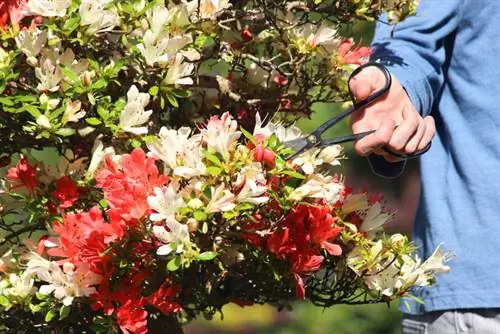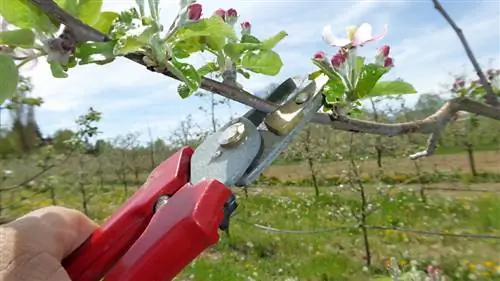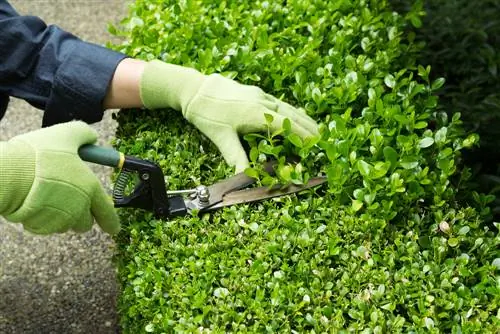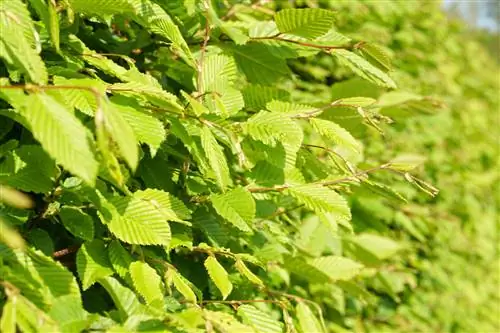- Author admin [email protected].
- Public 2023-12-16 16:46.
- Last modified 2025-01-23 11:19.
The Japanese azalea is closely related to the rhododendron - it is actually a rhododendron hybrid - but remains significantly smaller. For this reason, regular pruning to limit size is basically not necessary; unless you keep the plant in a pot.
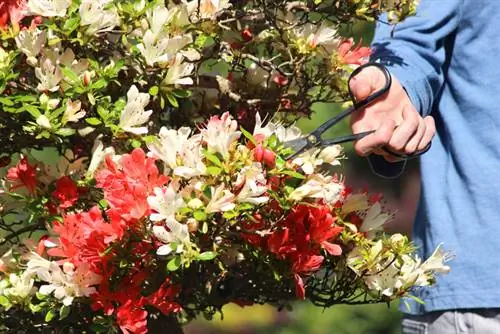
Is cutting Japanese azaleas necessary?
Japanese azaleas do not generally need to be pruned; young plants in particular should not be pruned. However, pruning older plants can be useful to prevent baldness and stimulate flower production.
Do you even have to cut Japanese azaleas?
Basically, you don't have to cut back Japanese azaleas and you should leave it alone, especially with young plants. However, for older, established specimens, pruning makes sense to prevent the plant from becoming bald. Such a rejuvenation cut ensures strong new growth, bushier growth and numerous flowers. Carry out pre-flowering pruning between mid and late April and reduce the bush significantly. Ideally, you should spread the cutting measures over a period of two to three years, then they will be better tolerated.
Cutting tolerance depends on the variety
Japanese azaleas are considered to tolerate cutting well, but this applies to different varieties to different degrees. Therefore, play it safe if possible and do not undertake major cutting measures all at once. Instead, spread them out over several years.
Cut Japanese azalea correctly
In contrast to many other flowering shrubs, the Japanese azalea also sprouts from the sleeping eyes in the old wood, which is why a necessary radical pruning should usually not be a problem. It is usually sufficient to remove shoots that are too long and dead or diseased branches every year. Thinning out from time to time is also useful. For a rejuvenation cut, however, proceed as follows:
- Prune in spring or autumn.
- Spread it over a period of two to three years.
- First cut back some of the shoots to about 30 to 50 centimeters above the ground.
- The following year, cut the remaining shoots in the same way.
When does a radical cut make sense?
A radical pruning always makes sense when the plant is in danger of becoming bald, has many dead or dry branches or no longer really wants to bloom. Even with fungal infections, careful pruning can be the only way to save yourself.
Tip
If you don't want to collect seeds, you should remove dead flowers in good time. But be careful: a new branch grows from the flower shoot, which you should of course not damage.

